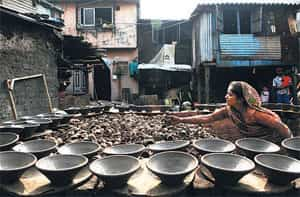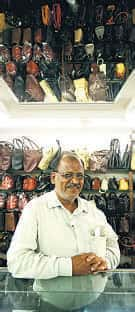Discover the real Dharavi
Fahim Vora, for whom Dharavi is home, takes offence when people call it a slum. And he has sufficient reason to be miffed. Beyond the first few metres of muck lies an extraordinary township built entirely by its resourceful residents. Reetika Subramanian reports.


The urban legend of its squalor has taken root because only few Mumbaiites have been to its bylanes. After the success of Slumdog Millionaire, Dharavi grew so famous that last May US ambassador Timothy Roemer went to visit and ended up joining children in a game of cricket. And now installation artist Anish Kapoor will also be exhibiting there.
"Dharavi is the most industrialised area in Mumbai with five major trades including a recycling plant," said Vora.
More than 60 years ago, Dharavi began as a village in the marshlands and grew, with no government support, to become a 535-acre economic miracle exporting crafts and manufactured goods to places as far away as Sweden.
To show people the wonders of this miracle, Vora has started a Dharavi tour agency called Be a Local. The best way to experience this area would be to use local guides, as they will ensure you entry everywhere.

A few metres ahead of this buzzing recycling plant, is Dharavi's claim-to-fame, Kumbharwada, the potters' colony. In houses and open spaces alike, you will see arrays of graceful pots - drying, ready to bake or on sale. And if you are lucky, you could get to mould your own pots too. "This is the most culturally vibrant sector of Dharavi but sadly few know of it," said Jagdish Mehta, a native Kumbhar. "It is in the hundreds of carefully laid out pots that the tradition and enterprise of Dharavi exists," he added.
A five-minute walk from Kumbharwada is Dharavi's Tamil colony, housing over 300 Rajnikanth devotees. Sudhakar Selvakumar, president, Maharashtra State Rajinikanth Fans Welfare Association said, "Of the 10,000 members of the association, majority are from Dharavi, which is also the association headquarters." The association membership is Rs 100.
Dharavi, of course, brings to mind leather bags and jackets. Along the Sion-Bandra Link Road, there are over a hundred boutiques displaying their collections. "Dharavi generates business worth Rs35,000 crore from leather every year," said Shanti Bhai, owner, Just Bags. "We don't just follow but also set fashion trends."
If you want to see the tanning process, just enter any of the tiny lanes on 90 feet road. The raw hides and the coloured dyes are a brilliant sight, but there is a peculiar stench.
But no trip to Dharavi is complete without a visit to Koliwada, where native Maharashtrian fisher folk reside. "We are the original inhabitants of Dharavi," said Yamuna Koli, dressed in a traditional sari.
Often dubbed as Asia's largest slum, Dharavi, in reality, is a conglomerate of blood, sweat and enterprise, which you must see before the planned redevelopment changes it forever.



